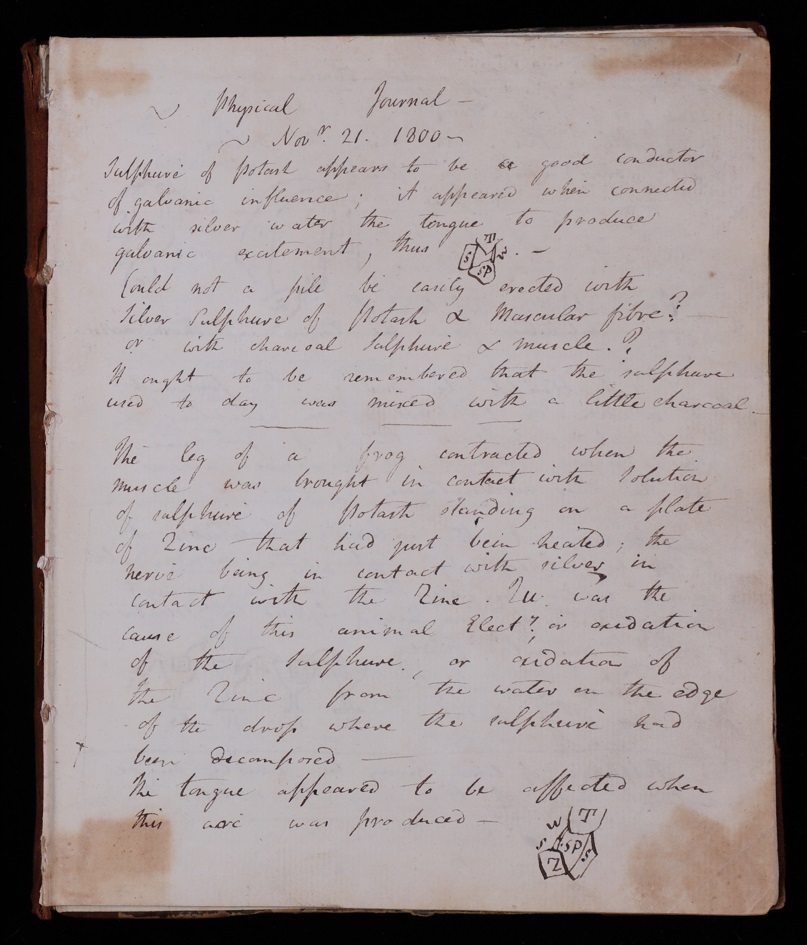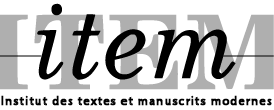Séminaire :
Séminaire Manuscrits scientifiques / 2023-202430/05/2024, ÉNS, 29 rue d'Ulm, 75005 Paris. Salle U207 (Ferdinand Berthier), 14h-16h.
Attention au changement de lieu !

RI MS HD/22/B, p. 001
Over the past four years, 11,417 pages of Davy’s notebooks have been transcribed by nearly 3500 volunteers from around the world. These have revealed the extent of Davy’s poetic output and confirmed his world view that matter is constantly being made, unmade, and made again in new forms. In this paper I will argue that Humphry Davy uses the figure of Proteus to illustrate his conception of a world in a state of perpetual change. For Davy, atoms are drawn dynamically towards and away from each other, forging new entities through the power of heat, cold, and other chemical interventions. I will look at specific instances where Davy’s poetry and science are in close proximity to each other, on the same notebook page or in the same notebook, paying specific attention to Davy’s interest in the so-called ‘proteus fish’, which was thought to be able to adapt to life on land or sea at will. Davy saw the mythological figure Proteus as a symbol for chemical change and for the changes that all matter goes through. I will also use the trope to discuss the development of Davy’s ideas from notebook to lecture and published page.
Professor Sharon Ruston is Chair in Romanticism at the English Literature and Creative Writing department at Lancaster University. She has published The Science of Life and Death in Frankenstein (2021), Creating Romanticism (2013), Romanticism: An Introduction (2010), and Shelley and Vitality (2005). She co-edited The Collected Letters of Sir Humphry Davy for Oxford University Press (2020) and currently leads the AHRC-funded project to transcribe all of the Davy’s notebooks (https://wp.lancs.ac.uk/davynotebooks/).

















